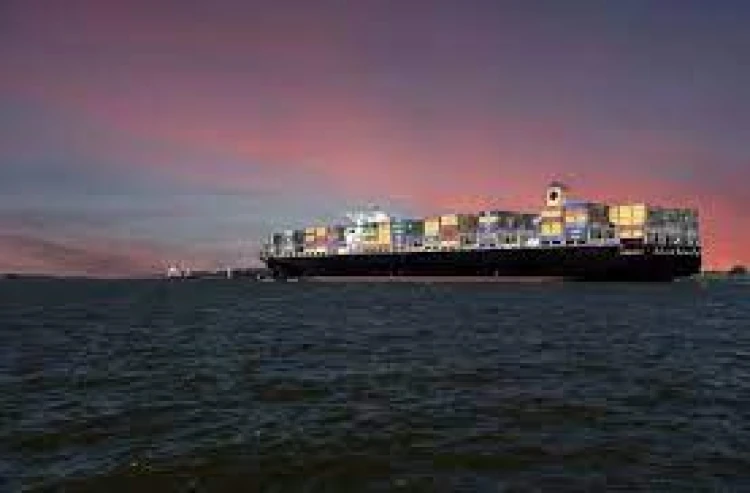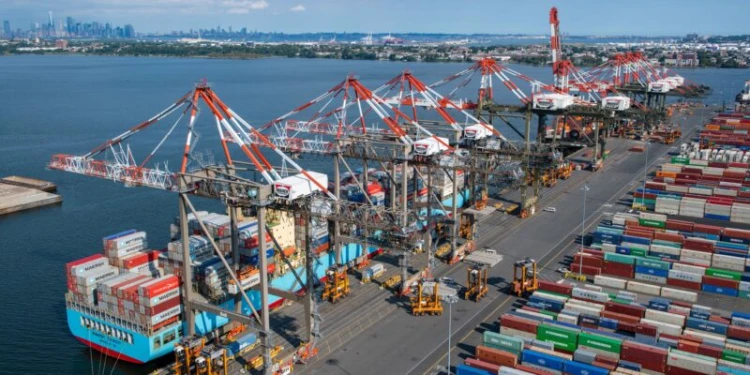ASEAN share of US-bound container shipping reaches 20%
Monday, 19 April 2021

TOKYO -- The Association of Southeast Asian Nations is making its presence felt in the U.S.-bound marine transportation market. Total shipping volume originating in the ASEAN region increased in 2020, pushing its global share above the 20% mark for the first time. In contrast, the share of shipping originating in China, which is the highest globally, has decreased for two straight years.
As the U.S.-China trade war simmered, the coronavirus hit the global economy. The latest trends in U.S.-bound marine transport, which also showed increased Vietnamese furniture exports, indicate a stay-at-home U.S. lifestyle.
These trends have been revealed by the Japan Maritime Center, which tallied U.S.-bound transportation from 18 Asian countries and regions, including Japan, South Korea, China and the ASEAN region. The figures show a notable increase in shipping from ASEAN, including Singapore and seven other countries. The volume reached 4.01 million units, based on the capacity of a standard 20-foot container. This figure marked a 16.1% increase from a year ago and exceeded the 4 million mark for the first time, with ASEAN's share increasing 2.3 percentage points to 21.9%.
As labor costs increased in China, manufacturers have set up production facilities outside the country in a strategy called "China plus one." The trend continued amid the COVID-19 pandemic. In particular, Vietnam, which contained infections relatively early, increased its presence.
The U.S.-bound volume originating in Vietnam increased 24.8% to 1.99 million units, representing a share of 10.8% -- up 1.8 percentage points from a year earlier. The share of Thailand-originating volume increased 0.3 percentage point to 4.1%. In the latest data as of January 2021, the share of the combined ASEAN region reached 23.3%.
The volume originating in China excluding Hong Kong increased 2.4% from a year ago to 10.81 million units. The figure, which represents the first year-on-year increase in two years, is still 6.4% less than the 2018 peak before U.S.-China trade frictions started to swell. China's 2020 share was down 0.9 percentage point year on year to 58.9%, remaining below the 60% mark for the second year in a row. The figure further dropped to 58.2% in January.
The share expansion of the ASEAN region was driven also by the homebound lifestyle in the U.S. ASEAN's U.S.-bound shipping volume of furniture increased 13.1% and 29.4% for home electronics from a year earlier. This helped boost the volume departing from Vietnam, which has many furniture and smartphone plants. "There's a possibility that the coronavirus may have accelerated manufacturers' shift of production facilities from China to peripheral countries," said a source at a shipping company.
Marine container shipping rates have increased across Asia. According to the Shanghai Shipping Exchange, the shipping rate for U.S.-bound freight from China was $4,008 per 40-foot container in early March. The figure, about triple year-ago levels, is among all-time highs.
Container shipping rates for freight originating in Southeast Asia are "also about triple the year-ago levels, just like the figures for China," the shipping company source said. "In particular, there's a serious shortage of containers in Vietnam and Thailand."
Last December, former U.S. President Donald Trump's administration labeled Vietnam a currency manipulator after the country's exports to the U.S. jumped. The succeeding administration led by President Joe Biden aims to wean the U.S. off its reliance on China by restructuring supply chains, including those for semiconductors. Any impact U.S. policies may have calls for attention. Still, no signs of a slowdown have been seen in the demand for U.S.-bound transportation. As Americans continue to stay at home and manufacturers shift away from China, the growth of shipping from ASEAN seems likely to accelerate.

06 January 2025
Hurricane Beryl trims cargo volumes in Houston and New Orleans

25 January 2025
Container freight rates tumble

08 February 2025

